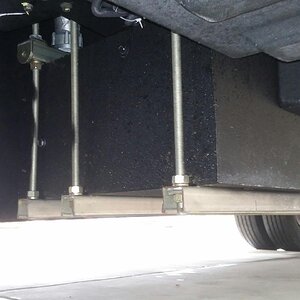Excerpted from the 28 page
MICHELIN RV TIRE
GUIDE FOR PROPER USE
AND MAINTENANCE
LONG TERM STORAGE
When a tire is fitted to a wheel and put under load,
but it is not regularly used, the tire does not have an
opportunity to “exercise” and will prematurely age.
If a recreational vehicle is not driven regularly, care
must be taken to preserve the remaining life of the tires.
Best practices include:
1. Store the recreational vehicle in a cool, dry, sealed
garage, away from electric generators or transformers.
Do not store in an area where welding is performed, or
in a garage that has frequently used electric motors.
2. Place a barrier between the tire and the storage
surface. Suitable barriers include plastic, plywood,
cardboard, or rubber floor mats.
3. Before storing the vehicles, thoroughly clean tires with
soap and water.
4. If outdoors, cover tires to block direct sunlight and
ultraviolet rays.
5. Inflate tires to the maximum inflation pressure
indicated on the sidewall.
6. If long term storage exceeds 3 months, consider taking
the recreational vehicle for monthly highway drives
(about one hour of operational time). Driving the
vehicle will give the tires an opportunity to generate
internal heat which will promote long life.
Before removing the vehicle from long term storage,
thoroughly inspect each tire, and restore all tires to the
proper inflation pressure.














